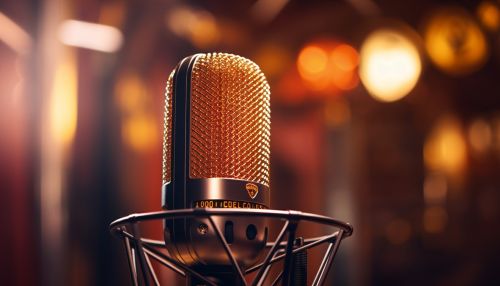Audio signal
Introduction
An audio signal is a representation of sound, typically as an electrical voltage. Audio signals have frequencies in the audio frequency range of roughly 20 to 20,000 Hz (the limits of human hearing). The term 'audio' means 'of or relating to sound', and the term 'signal' means 'a transmission or indication of a condition, event, or fact'.
Types of Audio Signals
There are two primary types of audio signals: Analog and Digital.
Analog Audio Signals
Analog audio signals are continuous signals in which the original information is directly translated into an electrical signal. The changes in air pressure that create sound are captured by a microphone and converted into an electrical signal. This signal is analogous to the original sound, hence the term 'analog'.


Digital Audio Signals
Digital audio signals, on the other hand, are a discrete representation of the audio signal. They are created by taking an analog signal and converting it into a digital format. This process, known as analog-to-digital conversion, involves sampling the audio signal at regular intervals and then quantizing each sample into a digital format.
Audio Signal Processing
Audio signal processing, sometimes referred to as audio processing, is the intentional alteration of audio signals often through an audio effect or audio processing unit. It is used to interpret, create, transform, or alter audio signals.
Audio Signal Chain
The audio signal chain is the path an audio signal takes from source to output, and it includes all the audio processing that happens along that path. The components of an audio signal chain might include a microphone, a preamplifier, an equalizer, a compressor, and a power amplifier.
Audio Effects
Audio effects are used in audio signal processing to alter the sound in some way. Common audio effects include equalization, dynamic range compression, and reverb.
Audio Signal Transmission
Audio signal transmission involves sending audio signals from one location to another. This can be done through various mediums such as air, electrical conductors, optical fiber, and radio waves.
Wired Transmission
In wired transmission, audio signals are sent through a physical medium, such as a wire or cable. The audio signal is converted into an electrical signal, which is then sent through the wire.
Wireless Transmission
In wireless transmission, audio signals are converted into radio waves and then transmitted through the air. The radio waves are then received by a receiver and converted back into an audio signal.
Audio Signal Measurement
Audio signal measurement is the process of quantifying the various aspects of an audio signal, such as its amplitude, frequency, and phase.
Amplitude
The amplitude of an audio signal is a measure of its level or strength. It is usually measured in decibels (dB).
Frequency
The frequency of an audio signal is the rate at which it oscillates. It is measured in hertz (Hz).
Phase
The phase of an audio signal is the position of a point in time on a waveform cycle. It is typically measured in degrees.
